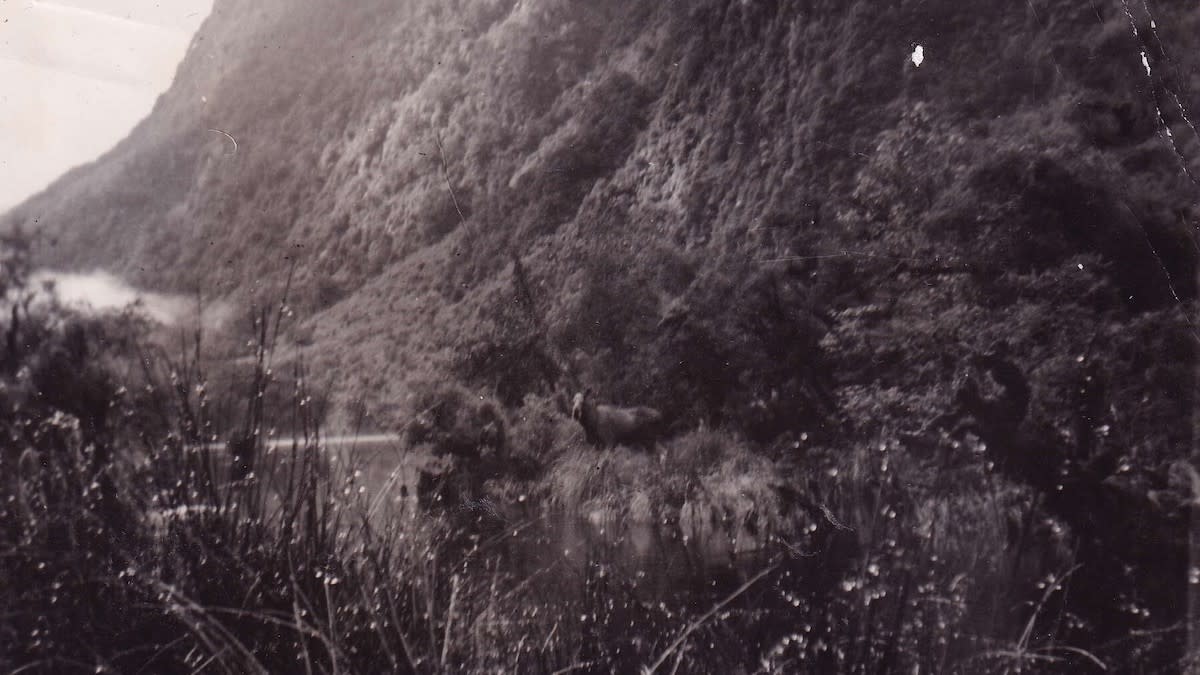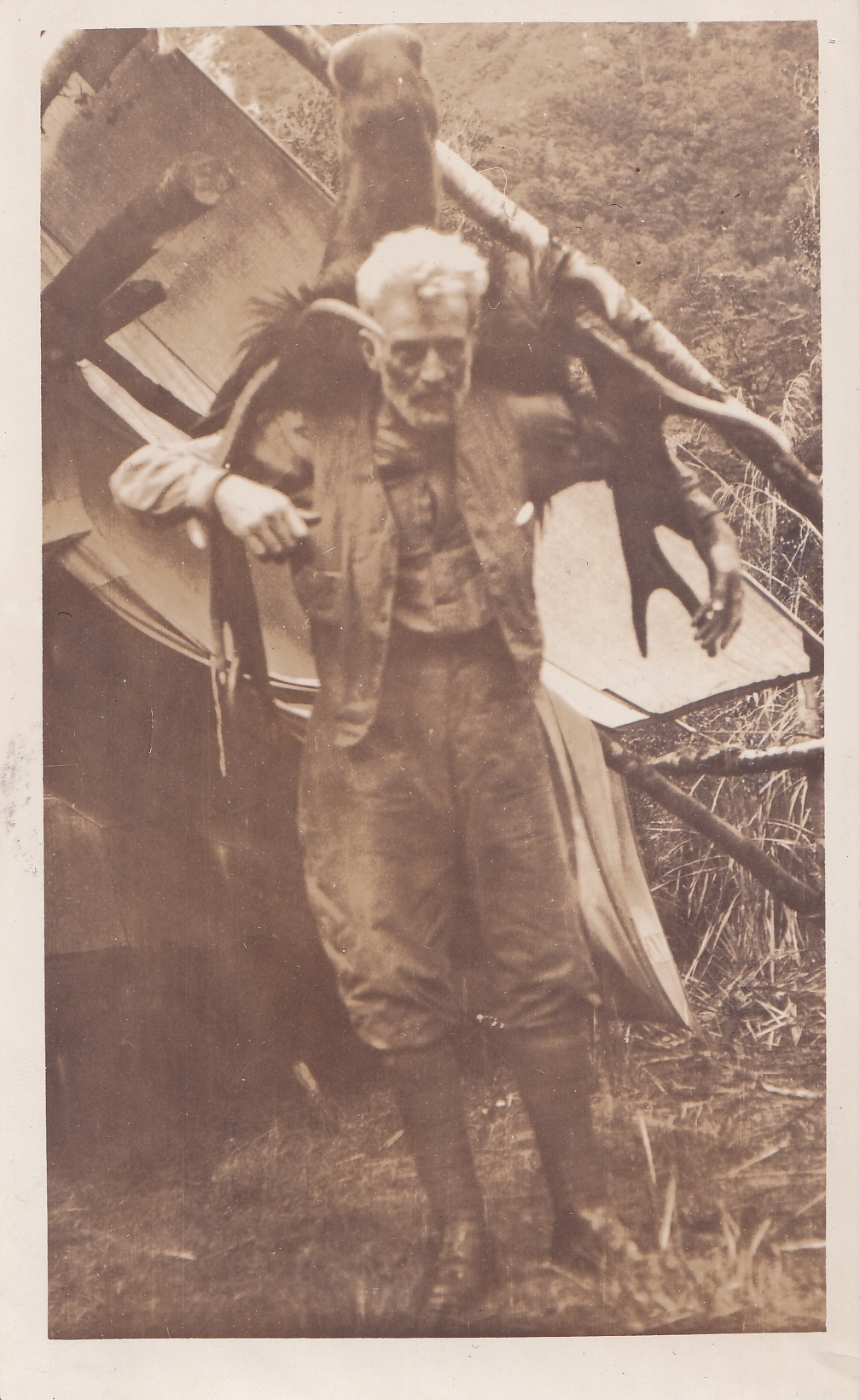
A moose’s impressive size and distinctive paddle-like antlers are enough to drive hunters to the ends of the earth. But not long ago, these giant cervids were found in a place you’d never expect: New Zealand.
Even stranger, many people believe that the Phantoms of the Fiordland Bush still exist.
An 8,000-Mile Journey
Introduced game animals are plentiful across New Zealand. The island nation is home to 12 big-game species (including seven cervid species) and countless introduced small game. Most were imported from the northern hemisphere by “acclimatisation societies” to allow settlers access to the same hunting opportunities they enjoyed in their home countries. With a complete lack of natural predators (aside from man and huge expanses of wilderness), New Zealand was a paradise for game animals.
The country’s government had a vision of converting one of their most remote forests, what is known today as Fiordland National Park, into a world-class game reserve with red deer and moose as its most prized inhabitants.
Between 1900 and 1910, the New Zealand Premier struck a deal with the Canadian Government, tasking the Hudson Bay Shipping Company with the capture and shipment of 10 moose calves from the Beaver Hills of Saskatchewan.
The first release of moose into the town of Hokitika was a complete flop. Most of the calves on the first shipment perished at sea, with one calf breaking its leg just getting out of its crate. The few that survived the journey never bred, and the last remaining cow was shot in 1908 after being found raiding the gardens of locals. The second release in 1910 into Supper Cove in Dusky Sound, was more successful.

A Fiordland Moose Hunt
Most of the 10 calves survived the second voyage, and 10 years later, the New Zealand government commissioned Eddie Herrick to survey the area to test the viability of a huntable moose population. In 1923, he reported that moose, like red deer, were thriving, so he recommended a legal hunting season. Hunters harvested two bulls before Herrick changed the population model to suggest that the animals were actually far less common than previously thought.
Later, Herrick shot one more bull moose, the last bull to be legally harvested in New Zealand. For another 20 years, moose were commonly sighted around Dusky Sound by local hunters. However, after the last confirmed photograph of a moose in 1952 (a glimpse of a cow standing on a riverbank), they seemingly disappeared for good. All told, only around a dozen moose were harvested by hunters over their entire existence in NZ.
Their demise could be attributed to a few different factors. Whilst Fiordland has plenty of space for moose, it’s not an ideal moose habitat. Its climate is akin to Southeast Alaska, with heavy year-round precipitation (nearly 23 feet of rain per year) and dense, old-growth forest. All of this provides very little to eat for an animal that can exceed 1,000 pounds. Small amounts of illegal hunting around this time didn’t help, but the final nail in the coffin was competition with red deer. A smaller relative of American elk, red deer are far better adapted to closed forest habitats and breed faster, meaning they can easily outcompete moose for habitat. Red deer numbers exploded in the park in the 1950s, so this increase in competition for food and territory likely acted as the final blow to the herd.
True Believers
Of course, much like the ivory-billed woodpecker of Louisiana and mountain lions of the American south, the moose of Fiordland enjoy a small but passionate following of folks who still believe they’re out there.
Locally known as the “Moose Man,” Ken Tustin has spent the majority of his life in some of the wildest areas of New Zealand, working as a professional hunter, backcountry helicopter pilot, wildlife biologist, and author. However, his real passion for more than 40 years is hunting for New Zealand’s last moose.
Unlike his predecessors, his intent isn’t to kill a moose but rather to find some evidence that they still exist. He’s spent years setting up trail camera traps and weeks at a time in the Fiordland bush looking for these animals. His rewards for these efforts include a set of footprints with large splayed-out hooves indicative of moose, along with droppings and browsing signs that are too large and high up to be red deer. The now 76-year-old continues to search for moose to this day with the hope that he may finally lay eyes upon a wild New Zealand moose.
“Moose deserve to be written into New Zealand's history of wildlife fauna,” he told the NZ Herald. “It's been written out or question-marked so many times. I'd like to see it recognized as being there. We have got to know the animals that live in our forest–you can't dismiss something as sizable as a horse which pulled the wool over our eyes decade after decade.”
There have also been several unconfirmed sightings since that infamous last 1952 photo. In 1995, a single frame from a video clip captured what seemed to be a moose calf with a distinctive dark coat and sloped back. Even more recently, in March of 2020, a 24-year-old man named Ben Young was flying in a helicopter across one of Fiordland’s remote valleys when he reportedly caught a glimpse of a cow moose standing in a clearing. He told Radio New Zealand that the animal had a “big long face” and massive ears, two unmistakable signs supporting it being a cow moose, not a red deer. And as a professional hunter who’s guided for moose in British Columbia, Young felt certain of what he saw.
In addition to sightings like these, a moose shed antler was found in 1976, and a sample of coarse, dark grey hair was DNA tested in 2001 and confirmed to be from a moose. At the time of this sample, Tustin estimated that there could have been only 20 to 40 moose in the area, but now the number is likely much lower. But he has a hunch that a few of them must still be around.
A $100,000 Reward
For the past 100 years, the story of moose in New Zealand was known only by locals or inquisitive Kiwi hunters reading into the rich history of game animals. But in 2011, the story of the Fiordland moose became international when companies Mojo and Hallensteins teamed up to offer a $100,000 bounty to anyone who could provide photographic evidence of moose alive in the Fiordland bush.
“Ken has been on the trail of the NZ moose for over 30 years,” Mojo creative director Lachlan McPherson told media. “He knows where they are and has DNA evidence, he just hasn’t seen one yet. We need to know more about what may be the last surviving population of moose in the Southern Hemisphere.”
This bounty sparked a flurry of outdoorsmen to venture into Fiordland in search of moose, but so far, none have been successful. However, this interest has brought moose back into the public eye over a century after they were first introduced. It has also raised the issue that despite being one of New Zealand’s rarest species, they still aren’t formally protected, meaning that if a hunter did find the last one, it’s likely to be shot.
The hunt for the phantom moose will likely continue for years to come. As surveying technologies become more advanced, it’s possible that some lucky hunter may stumble across one. In that scenario, we can only hope to learn from past mistakes and give these giants a chance to survive.
Feature image via Archives of New Zealand Deerstalkers’ Association National Heritage Trust Inc.




